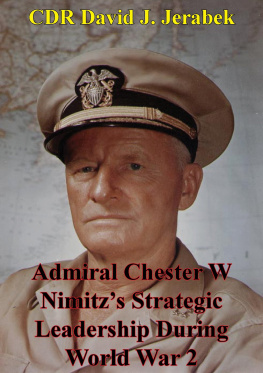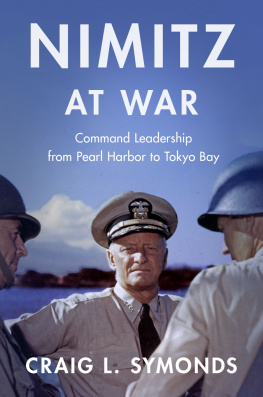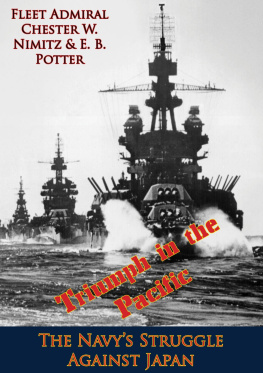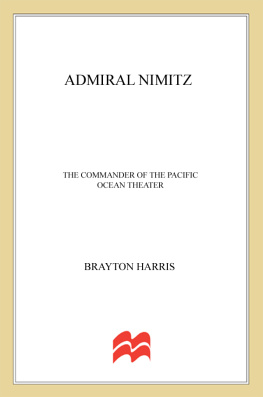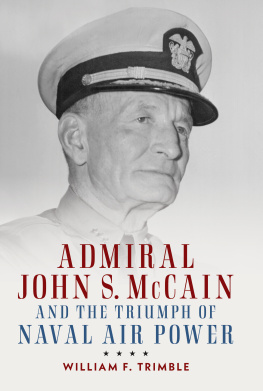

This edition is published by PICKLE PARTNERS PUBLISHINGwww.picklepartnerspublishing.com
To join our mailing list for new titles or for issues with our books picklepublishing@gmail.com
Or on Facebook
Text originally published in 1999 under the same title.
Pickle Partners Publishing 2014, all rights reserved. No part of this publication may be reproduced, stored in a retrieval system or transmitted by any means, electrical, mechanical or otherwise without the written permission of the copyright holder.
Publishers Note
Although in most cases we have retained the Authors original spelling and grammar to authentically reproduce the work of the Author and the original intent of such material, some additional notes and clarifications have been added for the modern readers benefit.
We have also made every effort to include all maps and illustrations of the original edition the limitations of formatting do not allow of including larger maps, we will upload as many of these maps as possible.
Admiral Chester W. Nimitzs Strategic Leadership During World War II
by
CDR David J. Jerabek
TABLE OF CONTENTS
Contents
ABSTRACT
Admiral Chester W. Nimitz, as Commander-in-Chief, Pacific Fleet and Pacific Ocean Area during World War II, commanded the most powerful naval force ever assembled and was arguably the individual most responsible for the Allied victory in that theater. His unique abilities serve well as a model for all who aspire to fill a strategic leadership role. Some of his competencies were derived from natural ability, while others were learned, and honed, through education, training, and experience. This report analyzes Admiral Nimitzs strategic leader competencies and evaluates his contributions in achieving a total victory in the Pacific for the Allied powers.
DEDICATION
A special thanks to my wife Vicky, who has shared the Navy with me for all my 20 years, and Matthew and Amanda, who have been part of both of these families for 14 and 10 years, respectively.
ADMIRAL CHESTER W. NIMITZS STRATEGIC LEADERSHIP DURING WORLD WAR II
Leadership is the process of influencing others to accomplish the mission by providing purpose, direction, and motivation.
As both Commander-in-Chief (CINC), Pacific Fleet and CINC, Pacific Ocean Area during World War II, Admiral Chester W. Nimitz commanded the most powerful naval force ever assembled. Admiral Nimitzs accomplishments speak for themselves in qualifying him as one of the greatest strategic leaders of the twentieth-century he defeated the Japanese fleet to achieve victory in the Pacific theater for the Allies. The object of this paper is to look at Admiral Nimitzs leadership style and determine the leadership traits or competencies that he possessed, and to what degree.
This analysis is useful for two reasons. First, as Colonel Marland J. Burckhardt states, there are observable competency differences between superior and average performers. If there is a distinct difference in performance and the traits can indeed be learned, or taught, the advantages of investigating them are obvious.
LEVEL OF COMMAND
In order to evaluate Admiral Nimitzs leadership traits I will begin by looking at two areas: first, I will determine the level at which Admiral Nimitz operated as CINC Pacific Fleet and CINC Pacific Ocean Area, and then select the most appropriate leadership traits to use for analysis. During World War II, the United States Pacific Command (CINCPAC) didnt exist, so as CINC, Pacific Ocean Area, Admiral Nimitz was a geographic, warfighting CINC clearly a unified combatant commander in todays vernacular. It therefore wouldnt require too great a leap to assume that he operated at the strategic level, but Ill utilize the Universal Joint Task List (UJTL), Chairman Joint Chiefs of Staff Manual 3500.04A, to validate this assertion.
The UJTL defines three levels of war tactical, operational, and strategic. Its obvious that the tactical level is inappropriately low, so Ill concentrate on the two higher levels. The operational level is the level of war at which campaigns and major operations are planned, conducted, and sustained to accomplish strategic objectives within theaters of operations. At first blush, one could make the quick assertion that Admiral Nimitz, as well as Generals Eisenhower and MacArthur, were operating at the operational, vice strategic level. But these definitions are todays definitions, and a lot has changed in the Unified Command and Joint Staff structures and duties since World War II. The UJTL provides further guidance and criteria in assisting with this determination.
The UJTL divides the strategic level into two categories; strategic level national military tasks, and strategic level theater tasks. It then lists the aims/objectives to be accomplished at each level, which can be utilized to determine the appropriate level of performance for my analysis. The table below lists the aims/objectives of the three highest levels of war.
Table 1: RELATIONSHIP OF LEVELS OF WAR TO AIMS OR OBJECTIVES

These tasks were as relevant during World War II as they are today, and from those listed in the table it is readily apparent that Admiral Nimitz, as the CINC Pacific Ocean Area, operated at the strategic-theater level of war. The UJTL further validates this by stating that the combatant commander normally operates at the strategic level of war, applying the military element of power ... to achieve the desired military end state within the strategic end state determined by national security or strategic military objectives and guidance. This describes most appropriately the level of command exercised by Admiral Nimitz, along with the other theater CINCs, during World War II. Now to the brass tacks leadership competencies.
As CINC Pacific Fleet and CINC Pacific Ocean Area, Admiral Nimitz had a very short chain-of-command, which was: Commander in Chief, U.S. Fleet (Admiral Ernest J. King); Commander, Joint Chiefs of Staff (Admiral William D. Leahy); and the President. Admiral King was also dual hatted, he was the Chief of Naval Operations (CNO), and therefore a member of the Joint Chiefs of Staff, as well as CINC, U.S. Fleet, which also gave him a seat on World War IIs Combined Chiefs of Staff. Nimitzs relationship with King was similar to the one shared by General Douglas MacArthur and General George C. Marshall with respect to strategic direction and strategy development.
STRATEGIC LEADERSHIP COMPETENCIES
There are literally hundreds of lists of leadership traits available. Countless books about management and leadership are on the market and each author has his own idea as to what qualities are most important in a leader. But the military isnt corporate America, and therefore requires different qualities from their leaders especially the warfighting commanders. Command is a concept that is unique to the military. Colonel Burckhardt notes that: The commander will not find in management theory the insights and values that can explain to soldiers why their organization is more important than they are, why it can be sacrificed to national ... need, and whether they may live or die in the process. For this reason I will use the United States Army War Colleges list, taken from its Strategic Leadership Primer.
The Leadership Primer provides the following definition: Competencies are the knowledge, skills, attributes, and capacities which enable a leader to perform his required tasks. There are three categories of leadership competencies conceptual, technical, and interpersonal. These are the competencies that will be utilized to analyze Admiral Nimitzs leadership, and therefore will be looked at individually.
Next page
